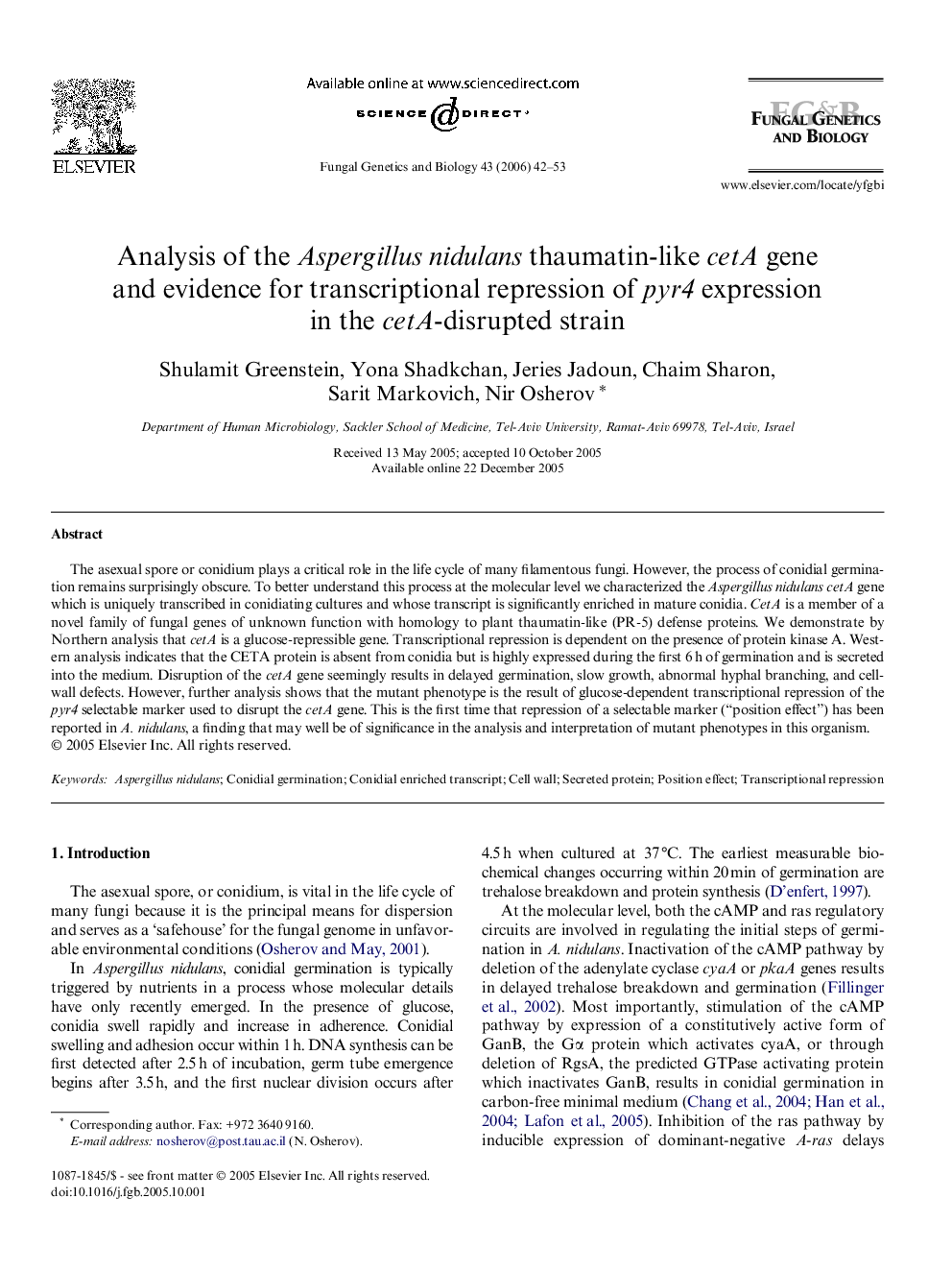| Article ID | Journal | Published Year | Pages | File Type |
|---|---|---|---|---|
| 2181792 | Fungal Genetics and Biology | 2006 | 12 Pages |
The asexual spore or conidium plays a critical role in the life cycle of many filamentous fungi. However, the process of conidial germination remains surprisingly obscure. To better understand this process at the molecular level we characterized the Aspergillus nidulans cetA gene which is uniquely transcribed in conidiating cultures and whose transcript is significantly enriched in mature conidia. CetA is a member of a novel family of fungal genes of unknown function with homology to plant thaumatin-like (PR-5) defense proteins. We demonstrate by Northern analysis that cetA is a glucose-repressible gene. Transcriptional repression is dependent on the presence of protein kinase A. Western analysis indicates that the CETA protein is absent from conidia but is highly expressed during the first 6 h of germination and is secreted into the medium. Disruption of the cetA gene seemingly results in delayed germination, slow growth, abnormal hyphal branching, and cell-wall defects. However, further analysis shows that the mutant phenotype is the result of glucose-dependent transcriptional repression of the pyr4 selectable marker used to disrupt the cetA gene. This is the first time that repression of a selectable marker (“position effect”) has been reported in A. nidulans, a finding that may well be of significance in the analysis and interpretation of mutant phenotypes in this organism.
